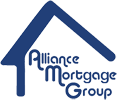Reverse Mortgage Loans
The Basics
 A reverse mortgage loan — also known as a home equity conversion mortgage (HECM) is a unique tool to tap into your home equity without selling your home. Essentially, it is a government-insured loan against the value of your property. This kind of loan, however, does not require payments of any kind for as long as you live — or until you move out of your home. (You must continue to maintain property tax and insurance on your home)
A reverse mortgage loan — also known as a home equity conversion mortgage (HECM) is a unique tool to tap into your home equity without selling your home. Essentially, it is a government-insured loan against the value of your property. This kind of loan, however, does not require payments of any kind for as long as you live — or until you move out of your home. (You must continue to maintain property tax and insurance on your home)
As the name suggests, reverse mortgage loans are the opposite of traditional mortgage loans. How? In three primary ways:
- Instead of a borrower making payments to the lender, the lender makes payments to the borrower.
- Instead of the loan balance decreasing over time, the loan balance increases over time.
- Instead of home equity increasing over time, it decreases over time.
Reverse mortgage Loans also have very specific requirements:
- You have to be a minimum of 62 years old and use the property as your primary residence.
- You have to have a low mortgage balance on your property or own the home outright.
- Only certain types of properties are eligible. These include most single-family homes, two-to-four-unit dwellings or townhouses, approved condominiums and manufactured homes.
- Because reverse mortgage loans are FHA loans, you are required to attend a counseling session with an approved FHA counselor.
- Although there are no mortgage payments, you are responsible for insurance, property taxes and repairs for the duration of the loan.
There are three types of reverse mortgage loans available. For more detailed information, take a look at What Are Reverse Mortgage Loans?
The Way They Work
Reverse mortgage loans have some very special characteristics:
- Loan Amount: The amount of the reverse mortgage loan is based on a combination of three factors: your life expectancy, the appraised value of your home and current interest rates.
- Loan Distribution: You get to choose the way you want to receive the funds. Reverse mortgage loans can be distributed as a lump sum, monthly payments, line of credit — or a combination of monthly payments and line of credit. This money can be used in any way you like. For example, you could use it to pay off your existing mortgage loan or cover living and medical expenses.
- Loan Payment: No payments are ever required while you are alive or living in your home. (You are still responsible for property tax and insurance on your home.) It is only when you die, sell or move that the reverse mortgage loan becomes due. (Loan may also become due if you are not paying your homeowners insurance or property taxes.) At that point, if the equity is greater than the loan balance, you (or your heirs) get to keep the profits.
One of the most unique features of a reverse mortgage is that it is a non-recourse loan. This means that if the loan amount winds up being greater than the value of the property, neither you — nor your heirs — will ever be responsible for making up the difference.
If you (or your heirs) decide to keep the property, you can pay the loan balance in full.
To learn more, take a look at How Do Reverse Mortgage Loans Work?.
The Right Choice for You?
 Reverse mortgage loans have received a great deal of media attention — both positive and negative. This has led to confusion and misinformation.
Reverse mortgage loans have received a great deal of media attention — both positive and negative. This has led to confusion and misinformation.
A reverse mortgage loan can be an invaluable asset in financial planning during retirement, providing cash flow and peace of mind. However, it is not suitable for everyone — or every situation. There are both significant advantages and disadvantages to consider. Take a look at our comprehensive list on our Pros and Cons page.
Get expert advice on reverse mortgage loans. Give Alliance Mortgage Group a call today at 720-598-0506.




